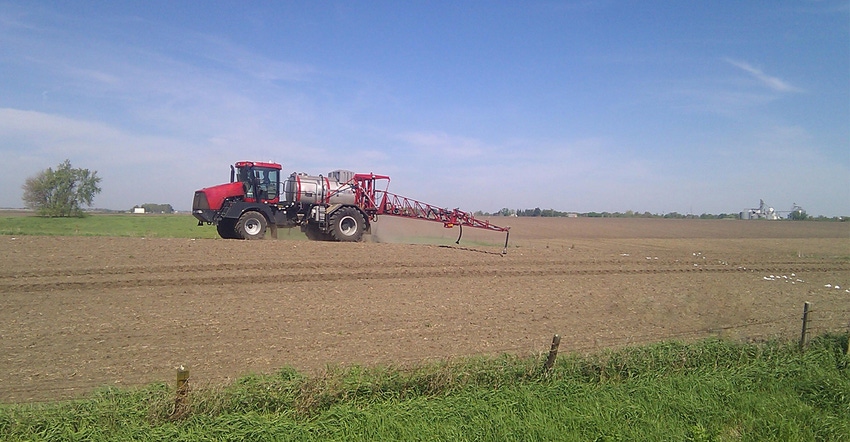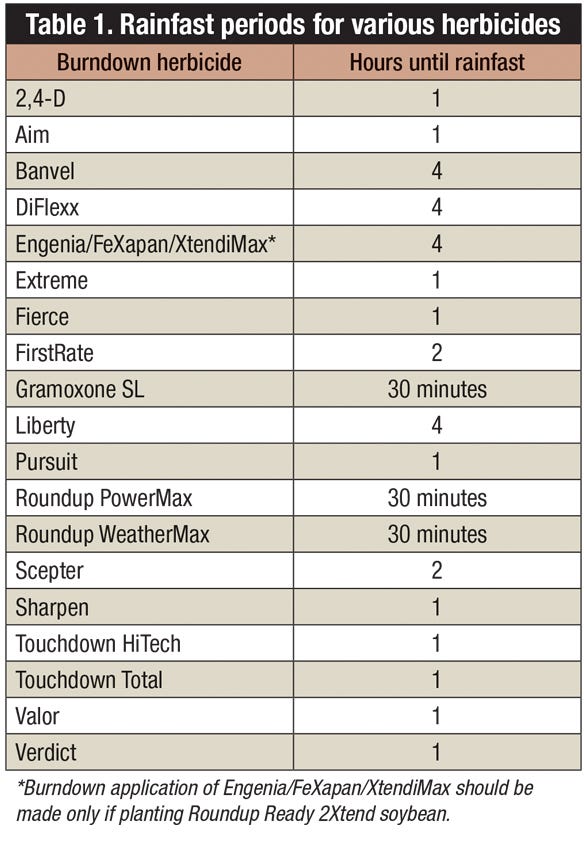April 30, 2018

Finding a good time for burndown herbicide applications has been a little tricky this spring, given the below-normal temperatures experienced through much of April, as well as the intermittent snow and rain. In addition to delaying fieldwork, these conditions can directly affect the efficacy of burndown preemergence herbicides. Keeping an eye on the weather forecasts and finding windows of optimal conditions for herbicide applications can help ensure the best results from your application — and your expense.
Rainfast period
Herbicide labels include recommendations on how much time must elapse between herbicide application and subsequent rainfall to ensure good herbicide performance. This is known as the rainfast period.

Source: UNL CropWatch

Generally, herbicide rainfast ratings (see Table 1) are based on good growing conditions. Poor conditions may require a longer interval between application and any rainfall, ensuring adequate herbicide translocation within the weed before the herbicide is washed off. For many herbicides, any amount of rainfall soon after spraying has the potential to reduce absorption, translocation and subsequent weed control. If you apply herbicide and it rains before it becomes rainfast, herbicide performance will be reduced.
Wide temperature fluctuations in the last couple of weeks have led to questions about possible effects on performance of burndown herbicides. The likelihood of decreased weed control due to cool temperatures will vary, depending upon the target weed, herbicide and rate applied. For example, glyphosate usually performs well under a wide range of temperatures. Best performance usually occurs when the temperature is 60 degrees F to 75 degrees F at application, and remains there for a few hours afterward.
When the temperature is lower than 60 degrees F, weed growth slows, resulting in slower herbicide uptake and translocation. This increases the required rainfast period and slows the onset of symptoms and herbicide efficacy. If the temperature is below 40 degrees F, avoid applying glyphosate-based herbicides. If a severe frost is predicted immediately following an intended application, it may be advisable to avoid spraying. If weeds are damaged or under stress before herbicide has properly translocated, control may be reduced.
The ideal solution is to wait for better weather conditions. However, if weed size or other situations dictate that the field be treated now, select a herbicide with excellent efficacy on the target species. Reduced-herbicide-rate treatments are less likely to provide acceptable control under adverse conditions than when plants are actively growing.
For more information on burndown herbicides, see the 2018 Guide for Weed, Disease and Insect Management in Nebraska.
Jhala is a Nebraska Extension weed management specialist.
This report comes from the University of Nebraska-Lincoln CropWatch.
About the Author(s)
You May Also Like




